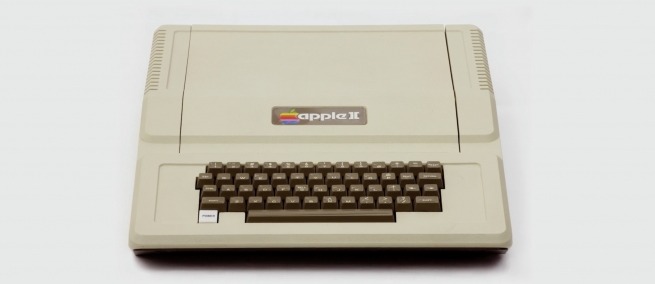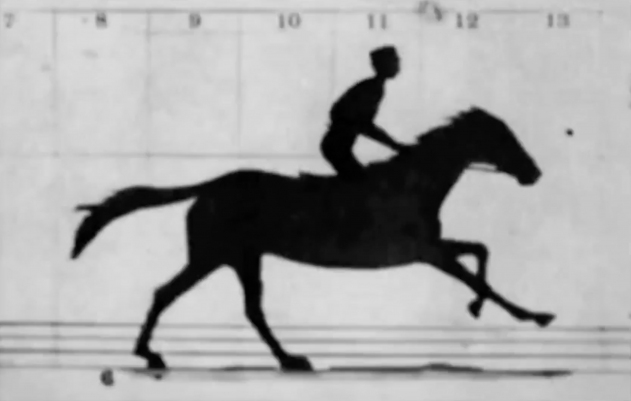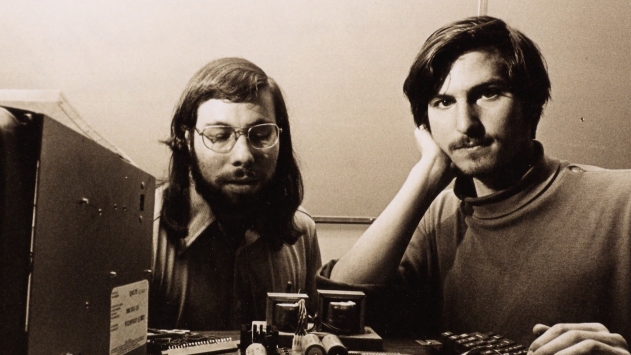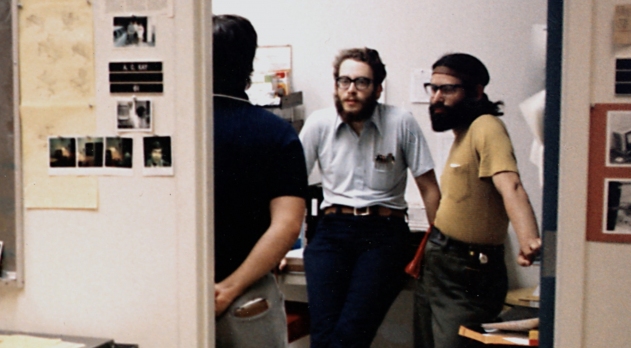
SILICON VALLEY: THE UNTOLD STORY is a three-part, Sloan-supported documentary series featuring interviews with inventors, historians, and CEOs of Silicon Valley. Directed by Michael Schwarz and produced by Schwarz and Edward Gray, the three episodes of the series will premiere back-to-back on the Science Channel on March 19. Science & Film spoke on the phone with Schwarz about the series. His partner Kiki Kapany at Kikim Media, who served as the series’ executive producer, briefly joined the conversation.
Science & Film: How did you approach telling the story of Silicon Valley, and what about that approach is unique?
Michael Schwarz: A lot of people date the history of Silicon Valley to the early ’70s when it got its name, or to the beginning of Hewlett Packard. They tend to think of the story of the computer. We were interested in telling the story of the place. The place was here long before people were making semiconductors.
A lot of the history of the place we now know as Silicon Valley starts with Stanford University. We came across a book about the relationship between Leland Stanford and Eadweard Muybridge–a fascinating book called The Inventor and the Tycoon by Edward Ball. Stanford was trying to figure out a problem, he had some money to spend, and he hired an eclectic entrepreneur who was also an artist. Muybridge used his camera to answer a question Stanford was asking about whether his horse’s hooves all left the ground at the same time. That really was the invention of stop motion photography which shortly thereafter led to motion pictures. It seems to be the first example of Silicon Valley spawning the invention of a world-changing technology.

S&F: To the extent that the series poses a question about what has made Silicon Valley so unique and fruitful over the years, did you come away with a single answer?
MS: Yes, I did.
S&F: What is it?
MS: You have to watch to find out! No, but really, not to be glib, my answer is that what makes it so hard for places to duplicate Silicon Valley is that they don’t have its history. What makes it unique is its history and the fact that it has evolved over more than a hundred years to become what it is today. People talk about the ecosystem of the Valley and we’ve gone into quite a lot of detail in the series about the various elements that make up that ecosystem. Some of the key ones are academic centers, industrial parks, and venture capital. The place has the kind of work force that can build companies. All of those factors have attained a critical mass that can only develop over time. What’s happened in the Valley has evolved in the same way that an ecosystem develops.
It goes back almost 150 years if you start at the Gold Rush. A lot of people who came out here were risk takers and adventurers; that culture began to take route in the late 1840s and ’50s. Is there a direct connection between that and Silicon Valley? Probably most historians would say no, but it starts to create the DNA of the place then that takes shape over many decades and results in what we have today. What’s interesting about the Valley is that it is a place so focused on its future that even a lot of people here today don’t know all that much about its past. Without that past it wouldn’t be what it is today. It seems obvious on one level but it’s profoundly important. We hope people will have a better understanding of that history after watching the show.

S&F: You had a launch event at the Computer History Museum. What was it like showing the film to an audience so familiar with the story?
MS: The Computer History Museum is a great organization in Mountain View. It’s housed in the building that used to be the home of Silicon Graphics [which made computer hardware and software]. There were roughly 400 people who came to the event, many of whom have lived in the area for a long time, many of whom have worked at places like Xerox PARC, Apple, and HP. At one point Mike Malone, who was the moderator of the panel, asked the audience how many individuals held patents in their name and half the room raised their hands.
On the panel we had Jan Koum, the founder of WhatsApp, Heidi Roizen and Kim Polese, who both played significant roles in the history of the Valley, and Steve Wozniak, who does a wonderful job in the series talking about not just Apple but the Valley too. We showed the first episode of the film and everybody seemed to like it. It’s very unusual that anybody would come to us and say, that stunk! The people who comment are generally people who have nice things to say. But, there was a great energy and people seemed to appreciate it. It was very heartening because on the one hand, it’s a hometown crowd and there is a certain expectation that they’ll be friendly, but it’s also a crowd that knows a lot and when you’re showing a film like this to people who know a lot themselves there is always an anxiety that they’ll say, why didn’t you do this? And, you really screwed that up.

S&F: Steve Wozniak is great in the series. I had no idea that he gave away a lot his shares of Apple.
MS: Yeah, he doesn’t make a big deal of that but he did. He is a very generous person. He felt that not everyone was getting a fair shake in the early days of Apple and he wanted to do right by them, so he did.
S&F: Who were the main people you worked with to produce SILICON VALLEY?
Kiki Kapany: Our office has incredibly dedicated people who spent nights and weekends working. Our post-production supervisor Alyn Divine, our coordinating producer Stacey Toal, Wes Richardson our associate producer, they all did an amazing job. We couldn’t have done it without them, and our editors were fantastic.
MS: These things take a village. We had a great co-producer and writer, we had a great animator, composer. There are literally dozens of people who worked to make this possible. We couldn’t do it without our funder, Doron Weber from the Sloan Foundation, and the patience he has and confidence in us.
This is the first time we’ve made a film like this for a channel other than PBS, so it’s venturing into new territory, but the Discovery Science Channel has been very excited and supportive about it from the beginning. And none of this would have been possible without the support we received from the Alfred P. Sloan Foundation, which provided the main funding for the series. Both organizations embraced our vision of telling the story of the place and making it a cultural, intellectual, and technological history of the Valley not just about the technology.
SILICON VALLEY: THE UNTOLD STORY, will be broadcast at 8pm (ET/PT) on the Science Channel on March 19 with an international rollout to follow. (Meanwhile, the HBO comedy SILICON VALLEY will return for its fifth season on March 25). The Computer History Museum has developed associated educational materials for middle school, high school, and college-age students, as well as for community groups.
PARTNERS
TOPICS